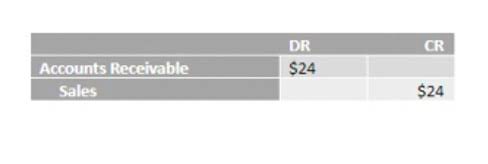
As you will see, the first digit might signify if the account is an asset, liability, etc. A chart of accounts will likely be as large and as complex as the company itself. An international corporation with several divisions may need thousands of accounts, whereas a small local retailer may need as few as one hundred accounts. To make it easy for readers to locate specific accounts or to know what they’re looking at instantly, each COA typically contains identification codes, names, and brief descriptions for accounts.
Why Is a Chart of Accounts Important?
For instance, if an account’s name or description is ambiguous, the bookkeeper can simply look at the prefix to know exactly what it is. An account might simply be named “insurance offset.” What does that mean? The bookkeeper would be able to tell the difference by the account number. An asset would have the prefix of 1 and an expense would have a prefix of 5. This structure can avoid confusion in the bookkeeper process and ensure the proper account is selected when recording transactions. The chart of accounts allows you to organize your business’s complex financial data and distill it into clear, logical account types.

Four Advantages to a Chart of Accounts
Separating expenditures, revenue, assets, and liabilities helps to achieve this and ensures that financial statements are in compliance with reporting standards. There are five main account type categories that all transactions can fall into on a standard COA. These are asset accounts, which account number digit identifies the primary account classification/ledger division? liability accounts, equity accounts, revenue accounts, and expense accounts. If necessary, you may include additional categories that are relevant to your business. Small businesses use the COA to organize all the intricate details of their company finances into an accessible format.
- Size – Set up your chart to have enough accounts to record transactions properly, but don’t go over board.
- Next, I’ll show you how the chart of accounts is a part of the financial statement building process.
- An added bonus of having a properly organized chart of accounts is that it simplifies tax season.
- For example, a company may decide to code assets from 100 to 199, liabilities from 200 to 299, equity from 300 to 399, and so forth.
- Each department will have its own phone expense account, its own salaries expense, etc.
Resources for Your Growing Business

The COA is tailored to an organization’s needs and can vary widely in complexity. You can think of this like a rolodex of accounts that the bookkeeper and the accounting software can use to record transactions, make reports, and prepare financial statements throughout the year. Because the chart of accounts is a list of every account found in the business’s accounting system, it can provide insight into all of the different financial transactions that take place within the company. It helps to categorize all transactions, working as a simple, at-a-glance reference point.
What is the standard chart of accounts?
In addition to assisting with financial statement creation, there are other advantages to using a chart of accounts. But you need to understand this part of bookkeeping and accounting whether you use a manual system or an online one such as QuickBooks. A chart of accounts is helpful whether you are using FASB, GASB, or special purpose frameworks. Changes – It’s inevitable that you will need to add accounts to your chart in the future, but don’t drastically change the numbering structure and total number of accounts in the future. A big change will make it difficult to compare accounting record between these years.
- It’s not always fun seeing a straightforward list of everything you spend your hard-earned money on, but the chart of accounts can give you an important view of your spending habits.
- Thus, the sales department, engineering department, and accounting department all have the same set of expense accounts.
- Here is an example of a company’s cash accounts being combined for presentation in the financial statements.
- A standard COA will be a numbered list of the accounts that fill out a company’s general ledger, acting as a filing system that categorizes a company’s accounts.
- Now, the trial balance (the summary of all account balances) checking account balance reflects $125,453 at the end of May which is included in the financial statements.
There are many different ways to structure a chart of accounts, but the important thing to remember is that simplicity is key. The more accounts are added to the chart and the more complex the numbering system is, the more difficult it will be to keep track of them and actually use the accounting system. Although most accounting software packages like Quickbooks come with a standard or default list of accounts, bookkeepers can set up and customize their account structure to fit their business and industry. The chart of accounts is a very useful tool for the access it provides to detailed financial information for individuals within companies and others, including investors and shareholders. For example, a company may decide to code assets from 100 to 199, liabilities from 200 to 299, equity from 300 to 399, and so forth. Those could then be broken down further into, e.g., current assets ( ) and current liabilities ( ).
Factors Affecting Account Coding

